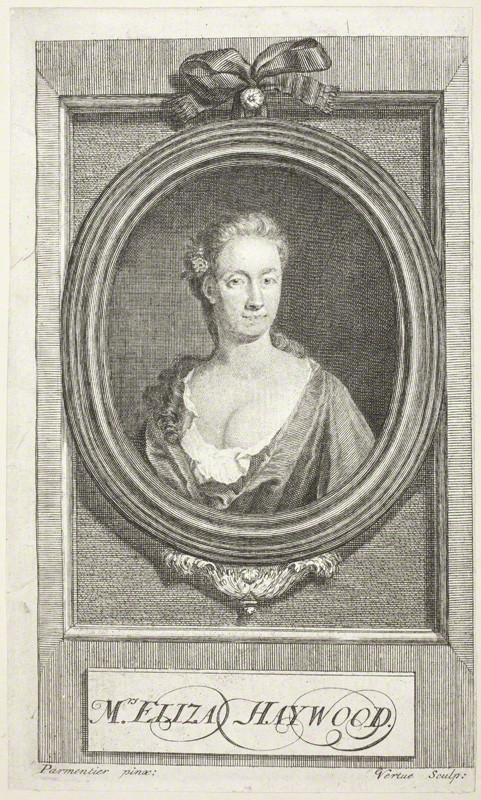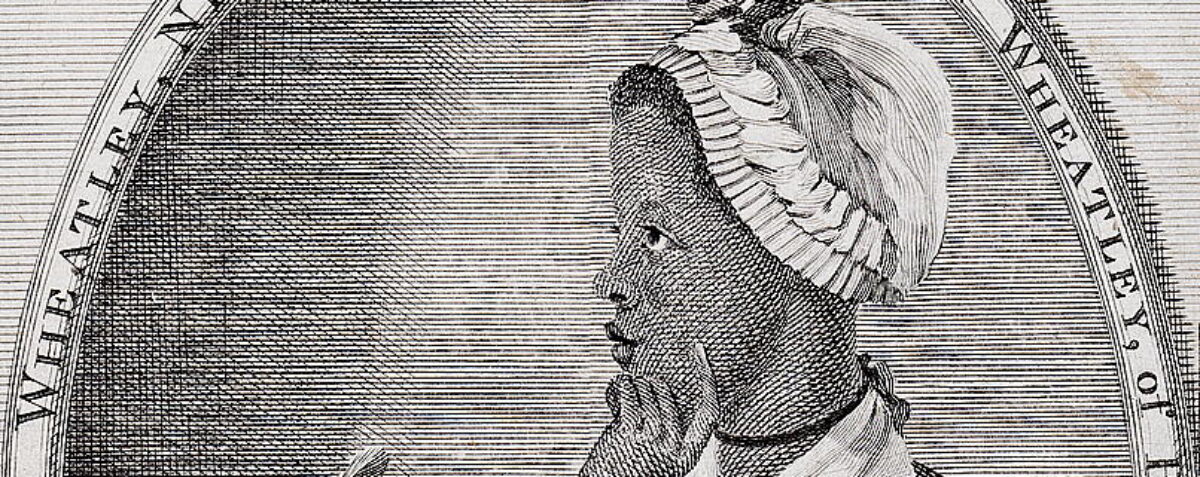Eliza Haywood (c. 1693-1756) was one of the most successful English novelists of the first half of the eighteenth century. Like many writers of this period, particularly women who were not from prominent families, we do not know all that much about her life before she started publishing. We know that she was born Eliza Fowler, but biographers have not been able to determine for certain exactly where or when; there are a couple of possible Fowler families that she could have been born into. She married a man named Haywood, but we do not know his full name or profession, or what happened to him. A letter from Eliza described herself as a widow, and death seems to be a plausible explanation for what happened to her husband; given how early he seems to have dropped out of her life, he must have died after a fairly short period of marriage.
Haywood seems to have started her career, not as a writer, but as an actress, and she worked for a while in in the mid 1710s in Dublin, which was where a lot of performers learned their craft before going on to London, as she did by 1717. She did not act much after the 1710s, but she stayed in touch with the theater scene in London, occasionally writing plays, and also performing every once in a while. In thee 1730s, she also wrote a book called The Dramatic Historiographer, which was a kind of companion to the current theater offerings in London, offering plot summaries and criticism of the plays that were staged in the period.

But Haywood was most successful as a writer of fiction. She became famous in 1719, when her first novel, Love in Excess, became what amounted to a bestseller. (The other bestseller of that year was Robinson Crusoe, and it is possible to see Defoe and Haywood as the great rivals for the attention of readers in the early 1720s.) She went on to write dozens of short works of fiction in the 1720s, works that fit the definition of what a “novel” was in that period—a short, romantic story, set in the present day, that could probably be read in a single sitting. Her works demonstrated that there was a large market of readers eager for interesting, exciting and entertaining works of fiction. William Warner, an astute critic of the fiction of this period, argues that Haywood established herself as the first writer of disposable works of fiction, books that were never intended to be permanent works of literature, but would be read, enjoyed, and then put aside for the next one. In this way, Haywood became in some sense the first author in English to have a brand like Danielle Steele or John Grisham; readers knew what to expect from a “Haywood novel,” and for a while they could not get enough of them. Her works were not seen as trash, however; they were read by men and women, produced in handsome editions, and collected by serious readers. Thomas Jefferson owned part of the fourth edition, printed in 1742, of her four-volume set Secret Histories, Novels, and Poems, which was a reprint of the set in which Fantomina had first appeared in 1725. That this collection of works had reached a fourth edition by 1742 testifies to the great popularity of Haywood’s works. And that Jefferson owned it testifies to their continuing relevance to readers on both sides of the Atlantic throughout the eighteenth century.


